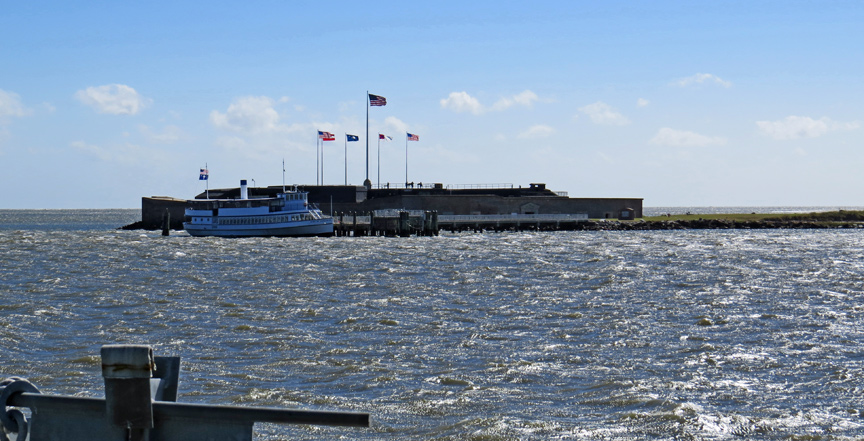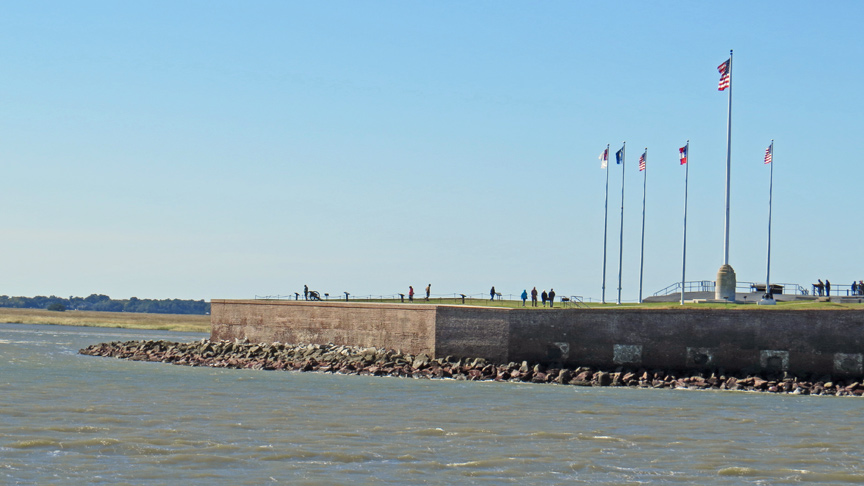

Fort Sumter National Monument
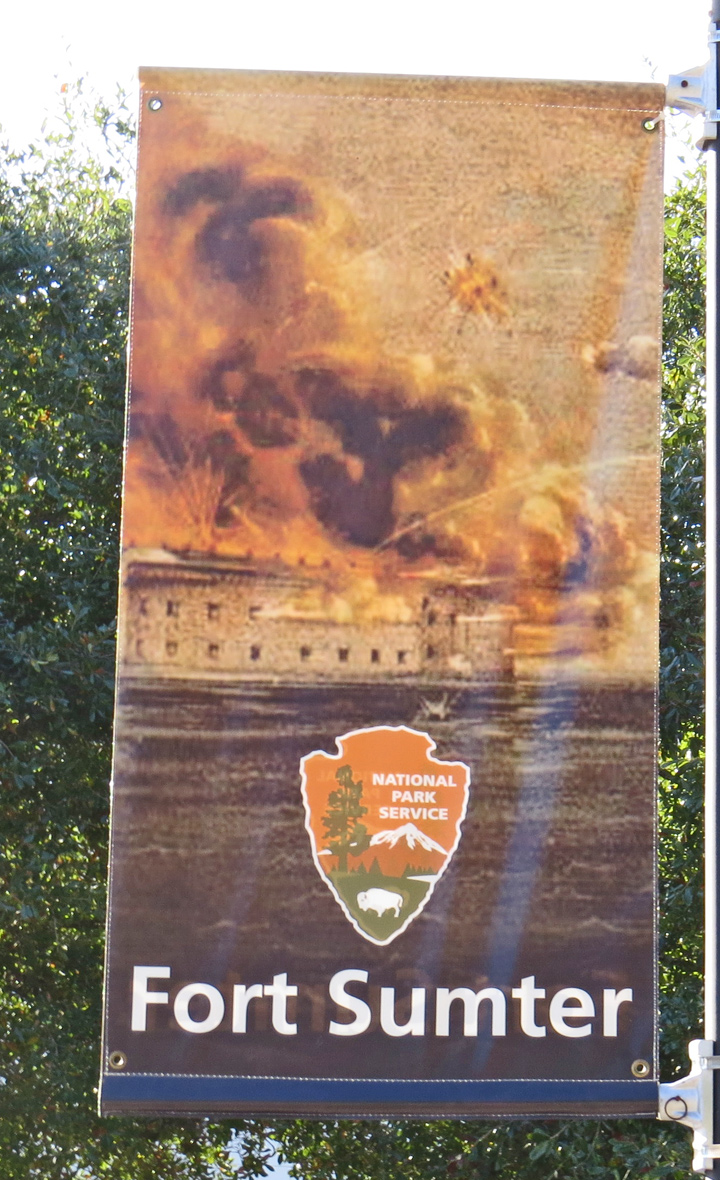
Fort Sumter National Monument encompasses three sites in Charleston: the original Fort Sumter, the Fort Sumter Visitor Education Center, and Fort Moultrie on Sullivan's Island. Access to Fort Sumter itself is by a 30-minute ferry ride from the Fort Sumter Visitor Education Center or Patriots Point.
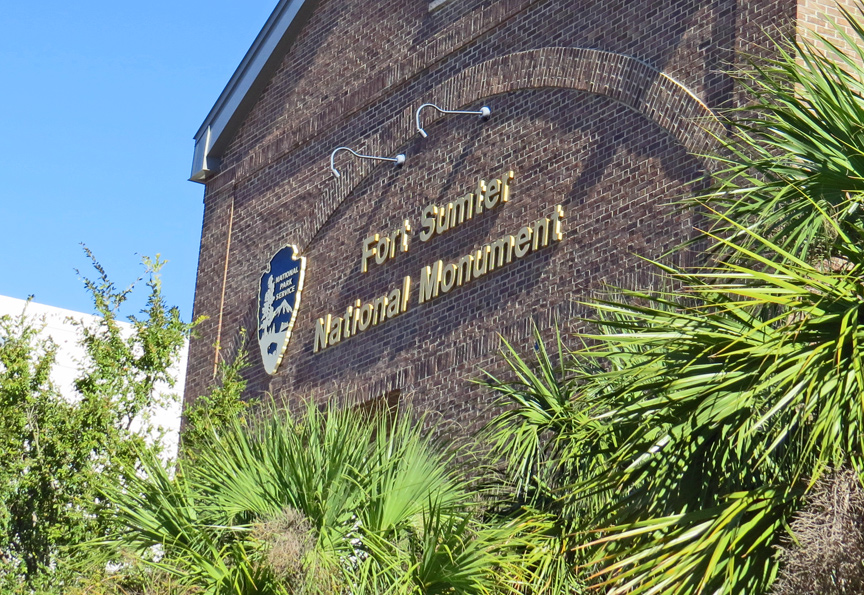
The Visitor Education Center's museum features exhibits about the disagreements
between the North and South that led to the incidents at Fort Sumter. The museum
at Fort Sumter focuses on the activities at the fort, including its construction
and role during the Civil War.
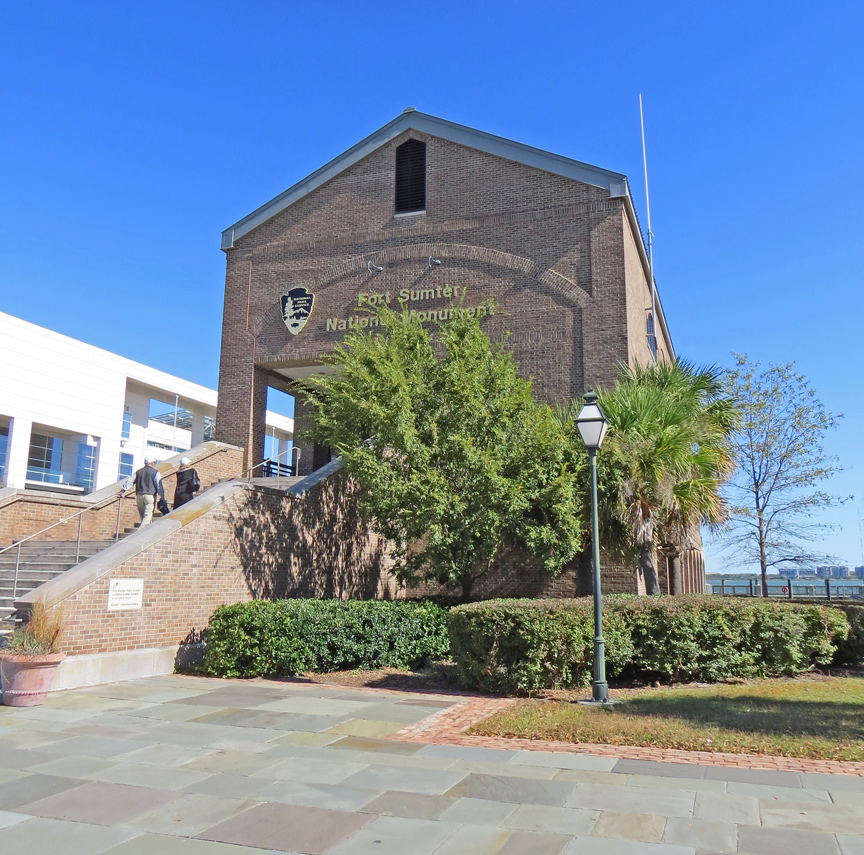
April 12, 2011 marked the 150th Anniversary of the start of the Civil War. There
was a commemoration of the events by thousands of Civil War reenactors with
encampments in the area. A United States stamp of Fort Sumter, and first day
cover, was issued that day.
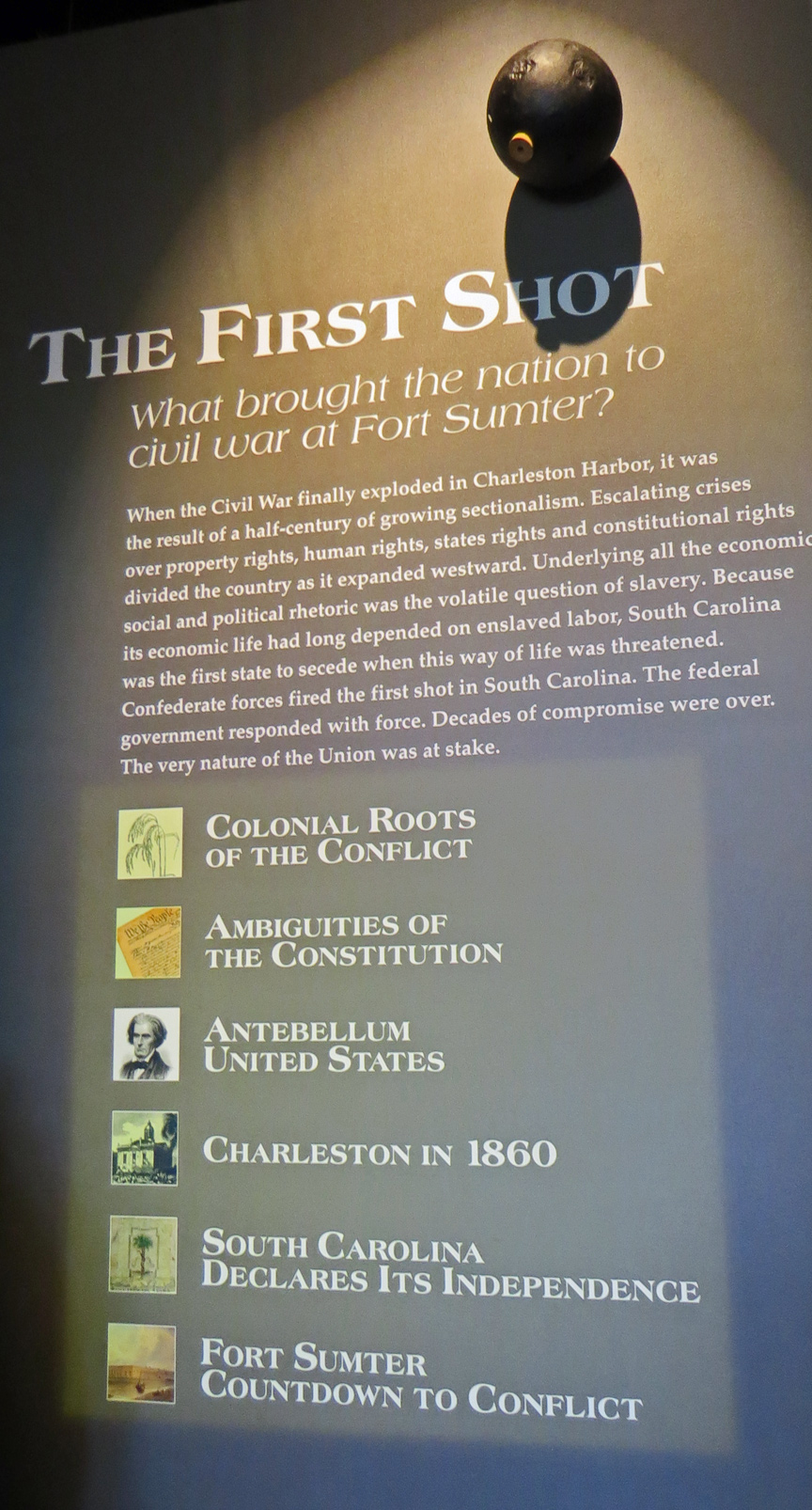
Fort Sumter is a Third System masonry sea fort located in
Charleston Harbor, South Carolina. The fort is best known as the site upon which
the shots which started the American Civil War were fired, at the Battle of Fort
Sumter on April 12, 1861. In 1966, the site was listed on the National
Register of Historic Places.
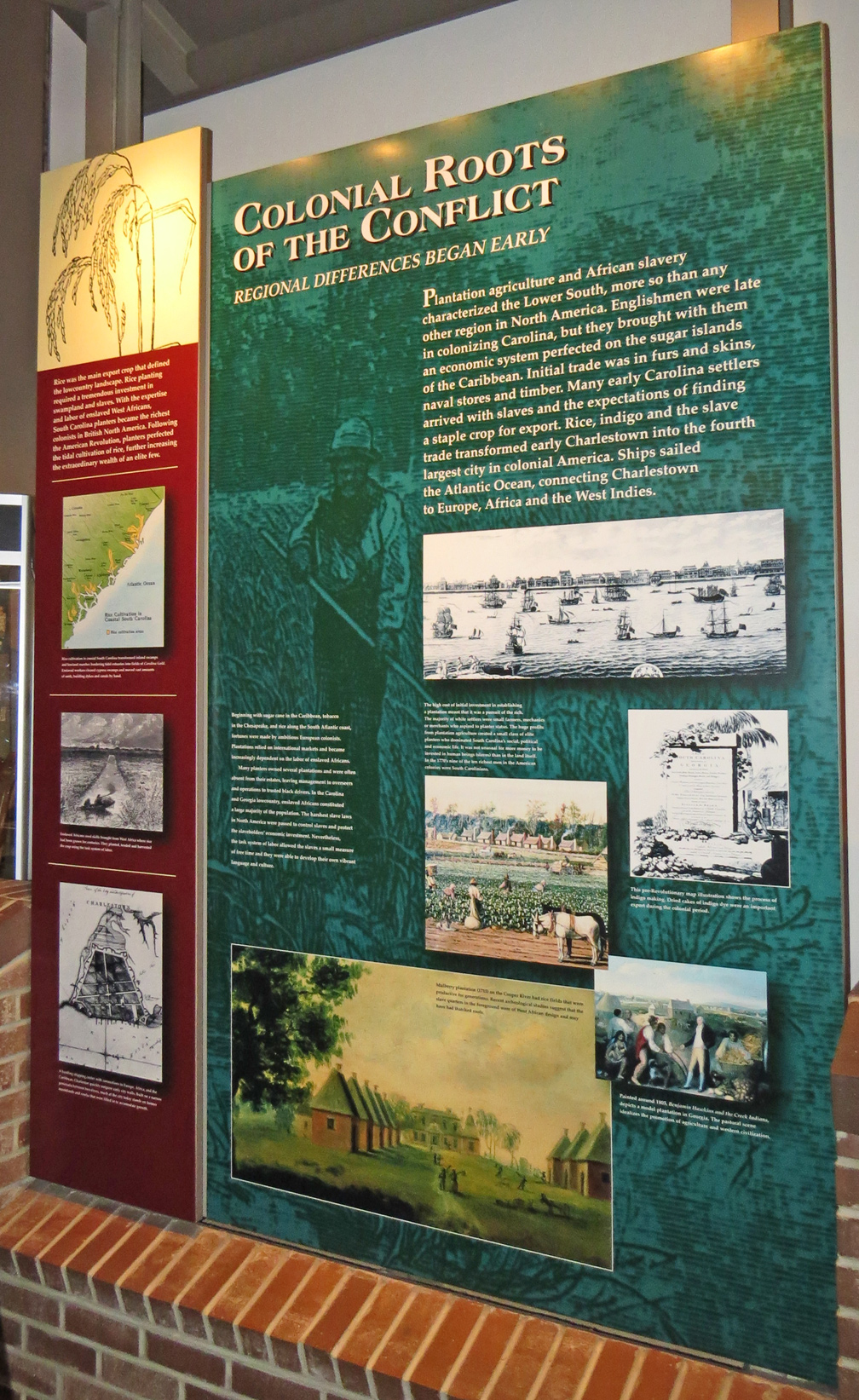
Named after General Thomas Sumter, Revolutionary War hero, Fort Sumter was built
following the War of 1812, as one of a series of fortifications on the southern
U.S. coast. Construction began in 1829, and the structure was still unfinished
in 1861, when the Civil War began. Seventy thousand tons of granite were
imported from New England to build up a sand bar in the entrance to Charleston
Harbor, which the site dominates. The fort was a five-sided brick structure, 170
to 190 feet (52 to 58 m) long, with walls five-feet thick (1.5 m), standing 50
feet (15.2 m) over the low tide mark. It was designed to house 650 men and 135
guns in three tiers of gun emplacements, although it was never filled near its
full capacity.

states where cotton was grown
On December 26, 1860, six days after South Carolina declared its secession, U.S. Army Major Robert Anderson abandoned the indefensible Fort Moultrie, spiking its large guns, burning its gun carriages, and taking its smaller cannon with him to be trained on the city. He secretly relocated companies E and H (127 men, 13 of them musicians) of the 1st U.S. Artillery to Fort Sumter on his own initiative, without orders from Washington. He thought that providing a stronger defense would delay an attack by South Carolina militia. The fort was not yet complete at the time and fewer than half of the cannon that should have been available were in place, due to military downsizing by President James Buchanan. Over the next few months repeated calls for evacuation of Fort Sumter from the government of South Carolina and then from Confederate Brigadier General P. G. T. Beauregard were ignored. Union attempts to resupply and reinforce the garrison were repulsed on January 9, 1861 when the first shots of the war, fired by cadets from the Citadel, prevented the steamer Star of the West, hired to transport troops and supplies to Fort Sumter, from completing the task. After realizing that Anderson's command would run out of food by April 15, 1861, President Lincoln ordered a fleet of ships, under the command of Gustavus V. Fox, to attempt entry into Charleston Harbor and supply Fort Sumter. The ships assigned were the steam sloop-of-war USS Pawnee, steam sloop-of-war USS Powhatan, transporting motorized launches and about 300 sailors (secretly removed from the Charleston fleet to join in the forced reinforcement of Fort Pickens, Pensacola, FL), armed screw steamer USS Pocahontas, Revenue Cutter USRC Harriet Lane, steamer Baltic transporting about 200 troops, composed of companies C and D of the 2nd U.S. Artillery, and three hired tug boats with added protection against small arms fire to be used to tow troop and supply barges directly to Fort Sumter. By April 6, 1861 the first ships began to set sail for their rendezvous off the Charleston Bar. The first to arrive was the Harriet Lane, before midnight of April 11, 1861.
Text from Wikipedia
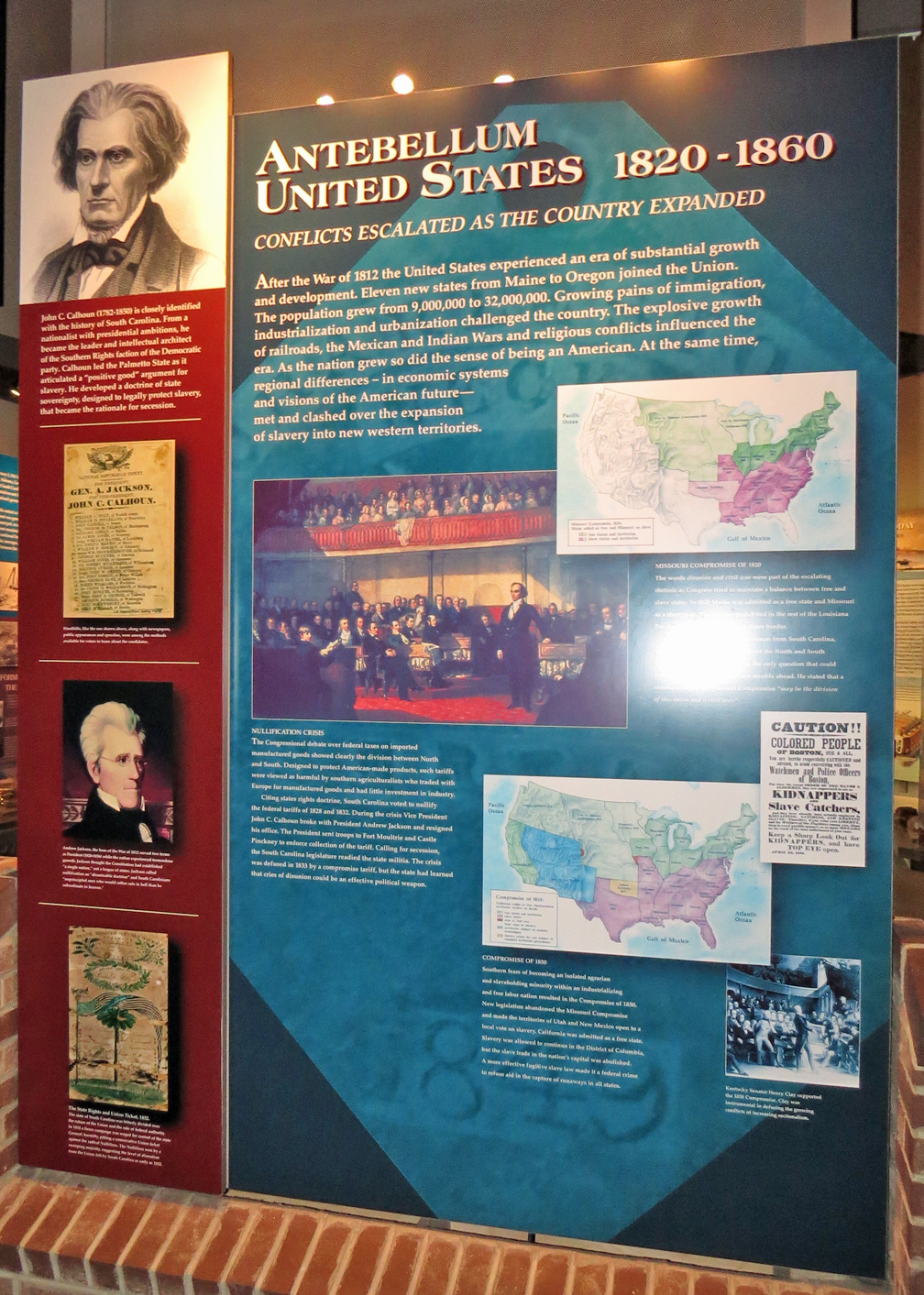
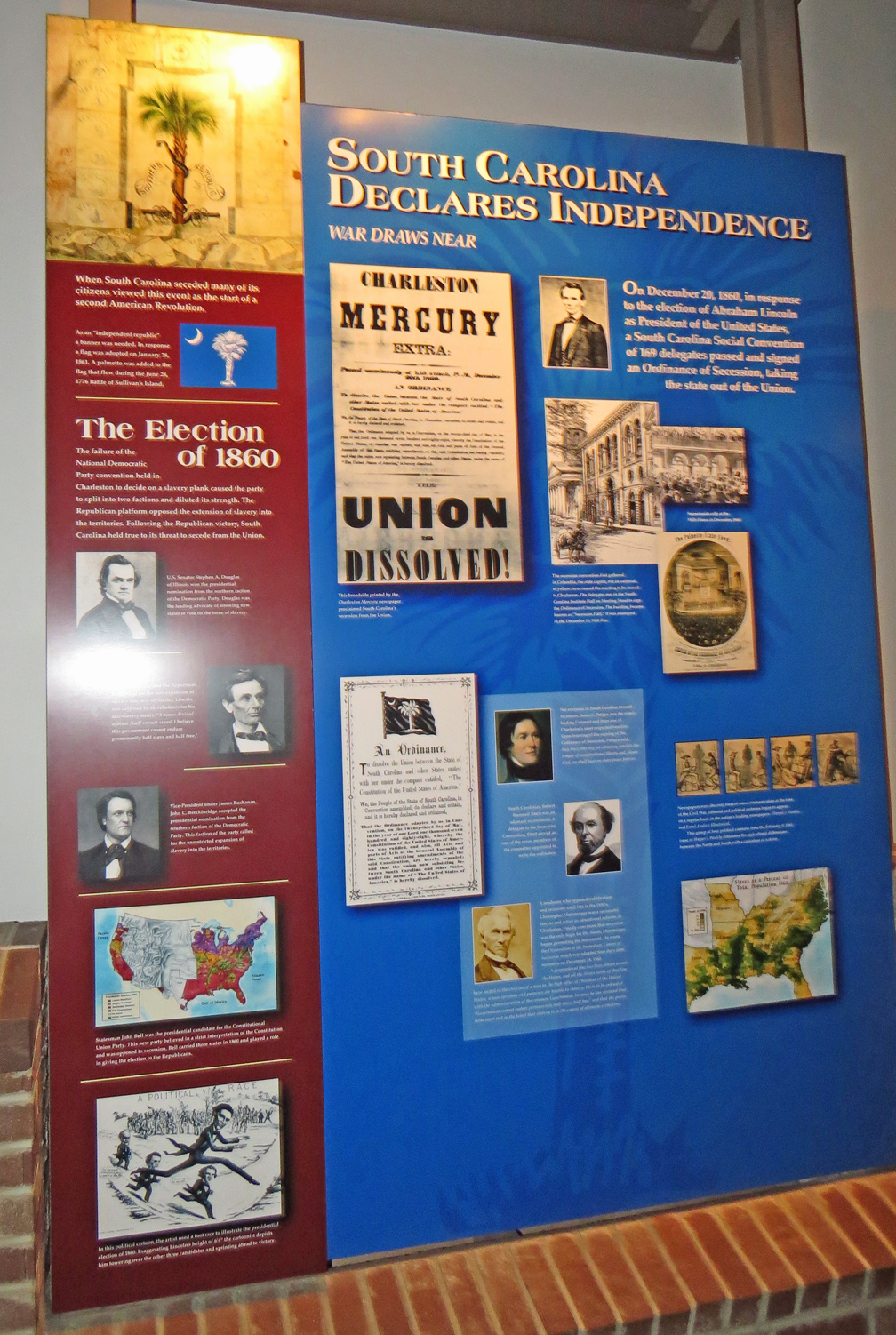

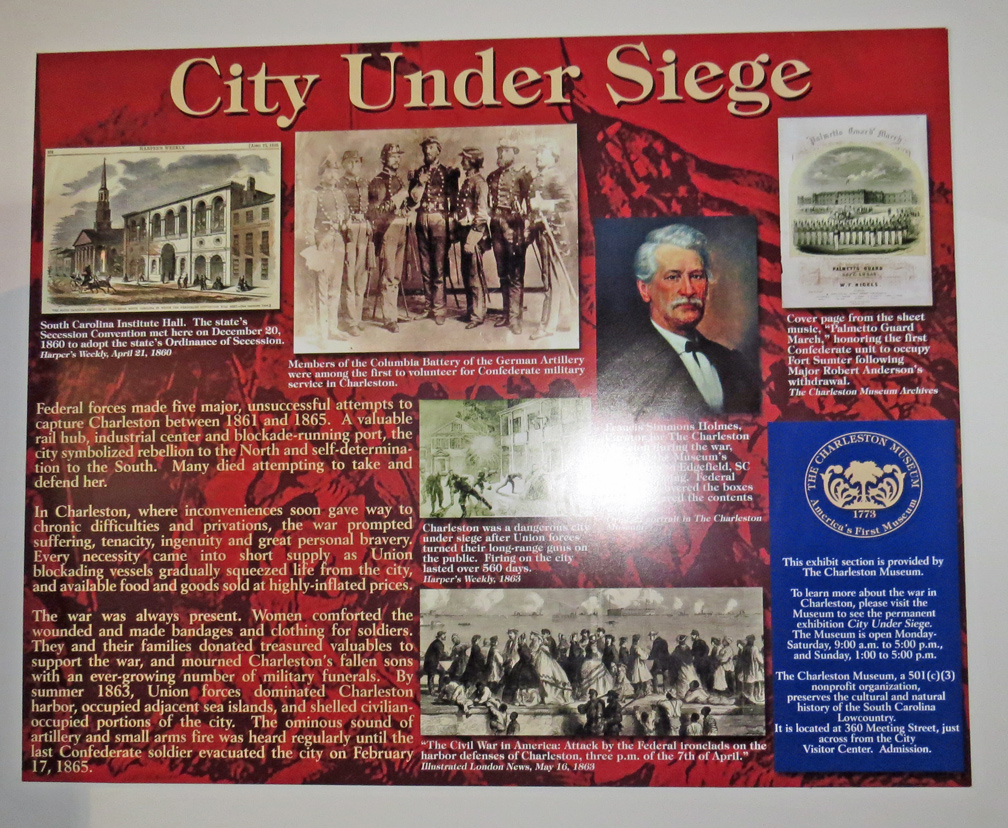


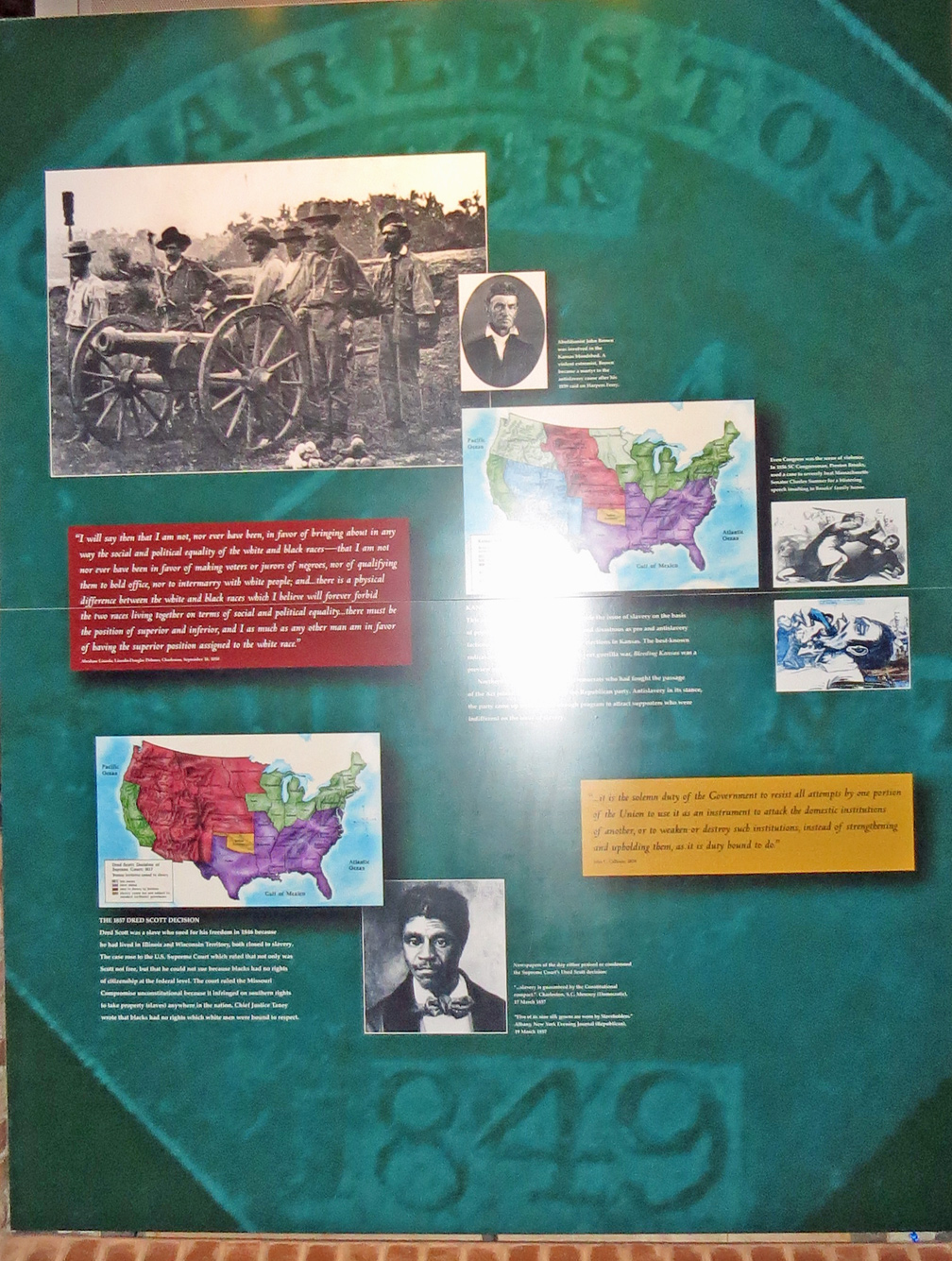
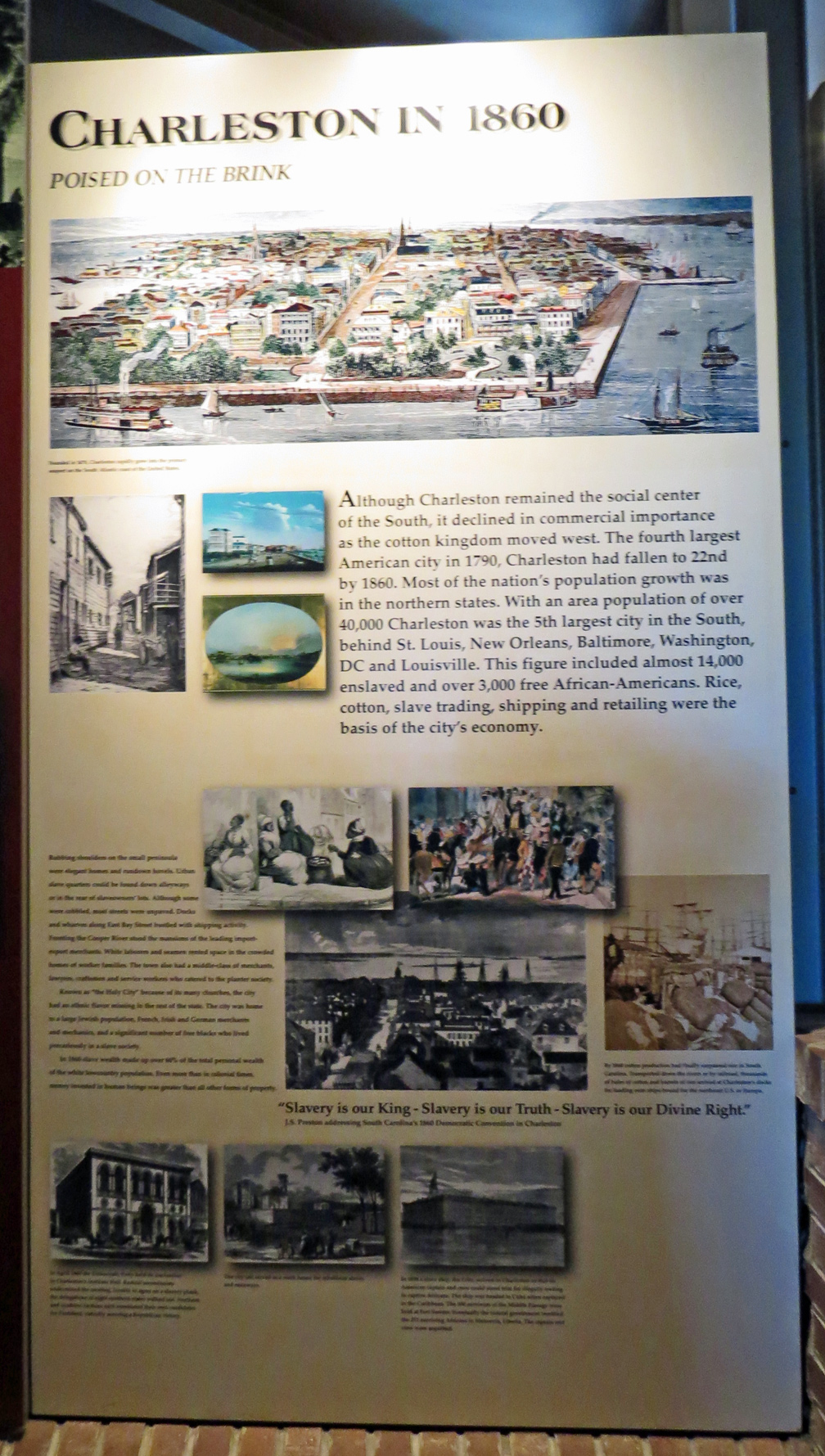
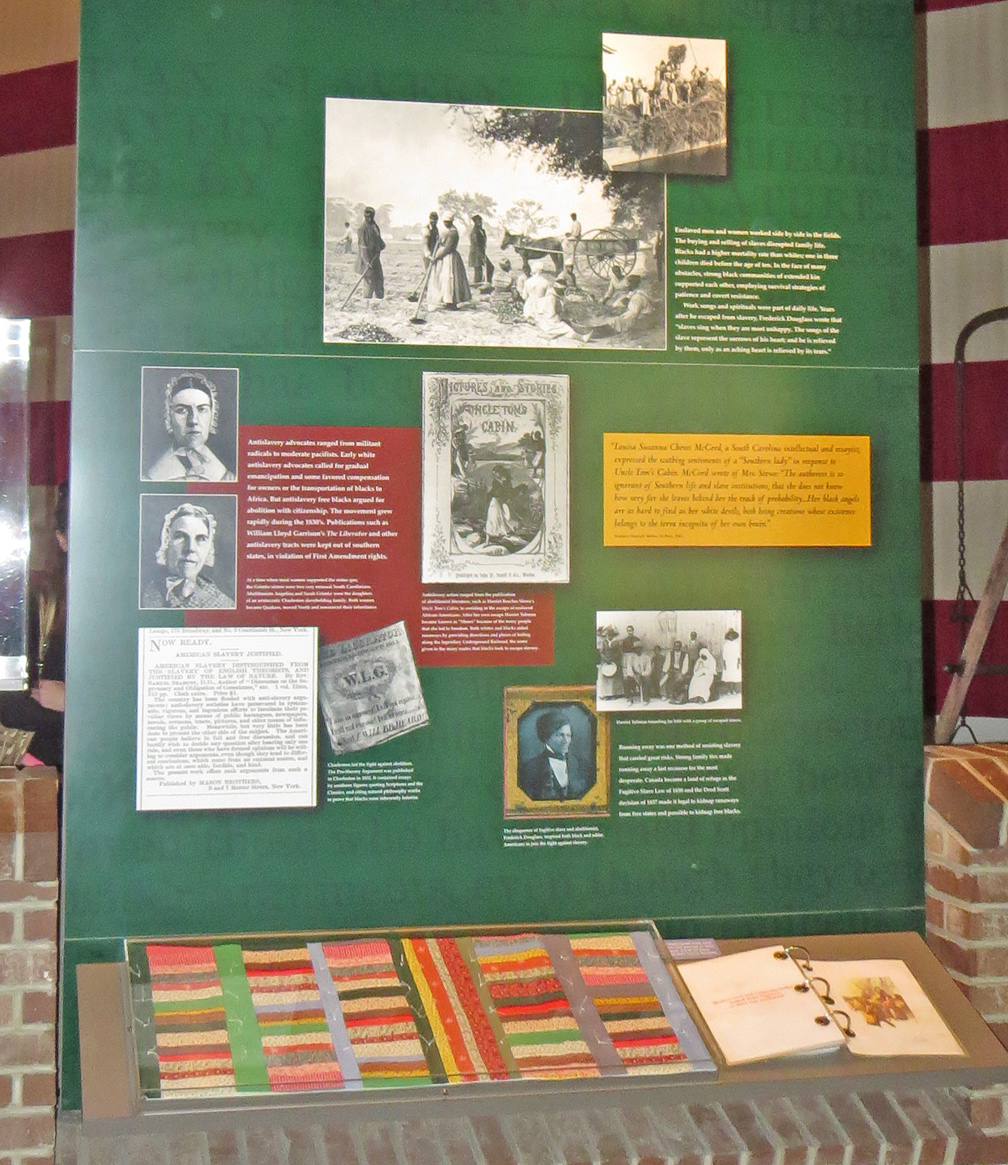
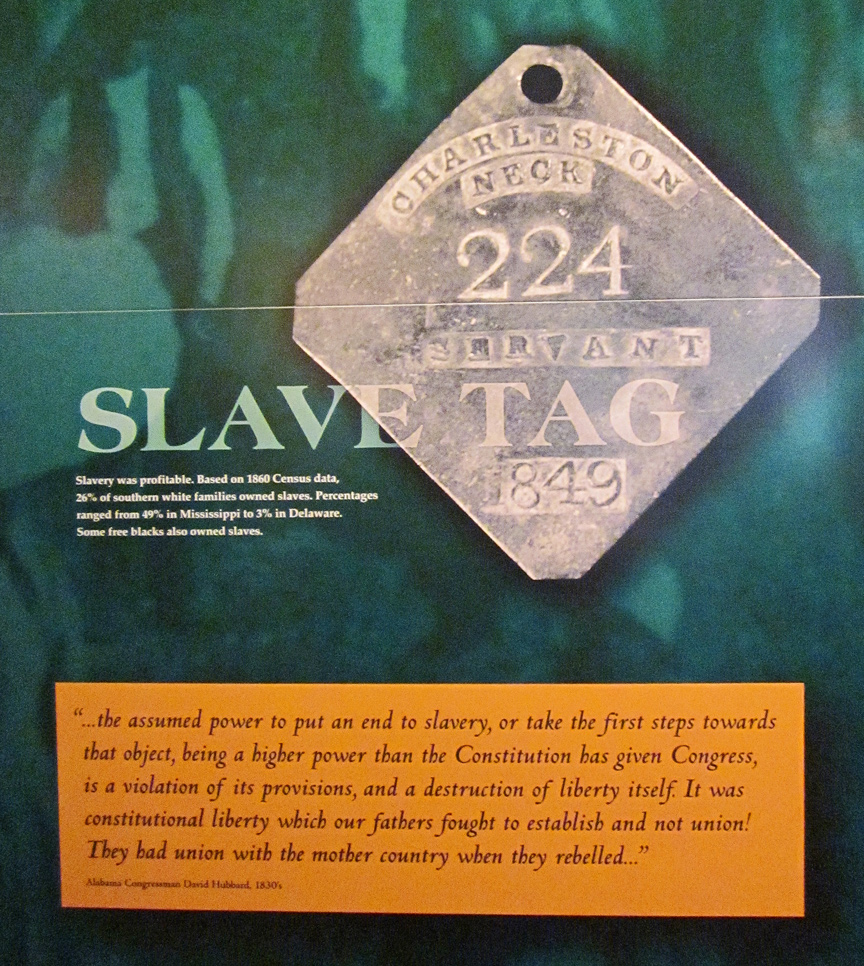
slave tag
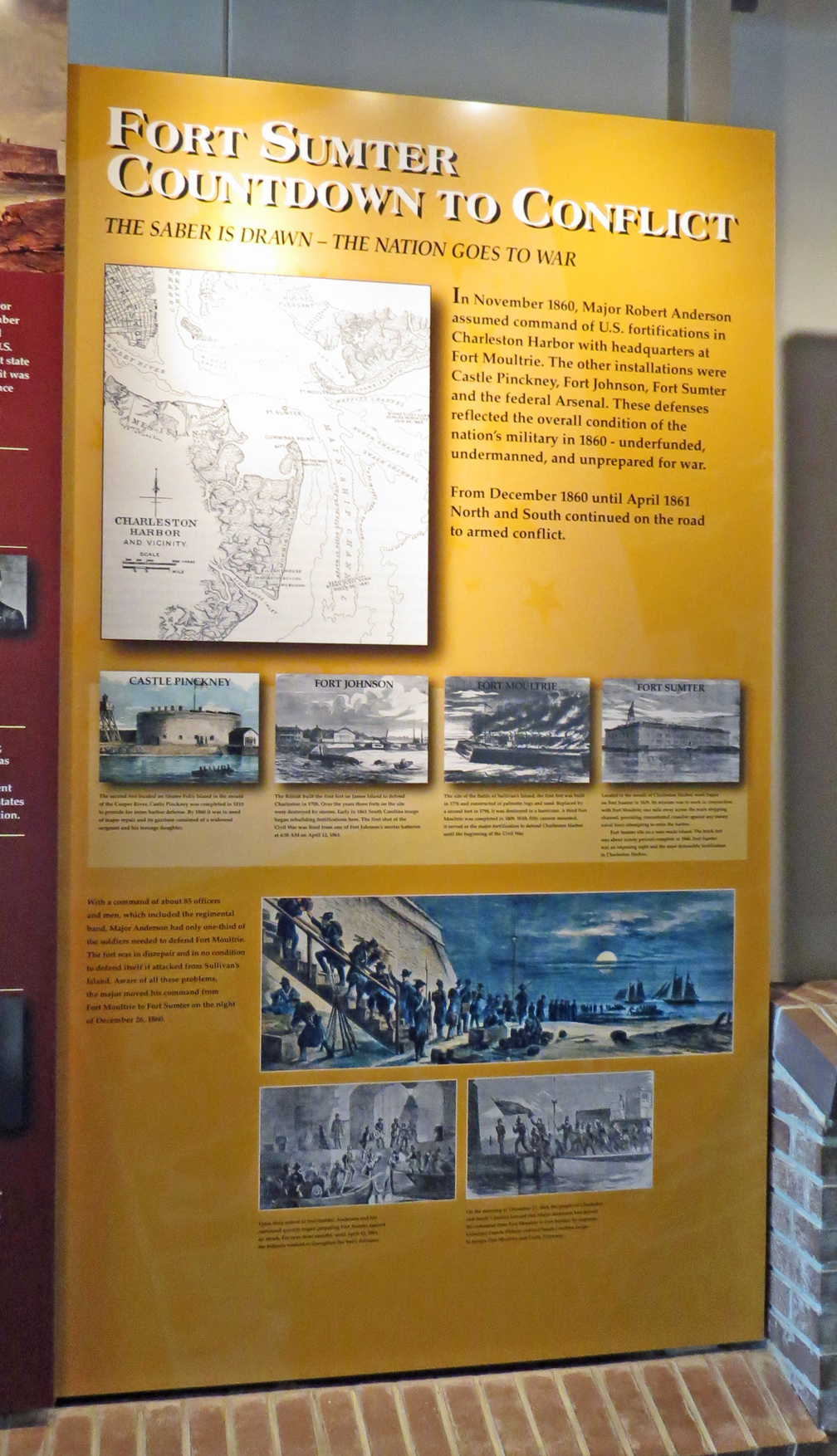
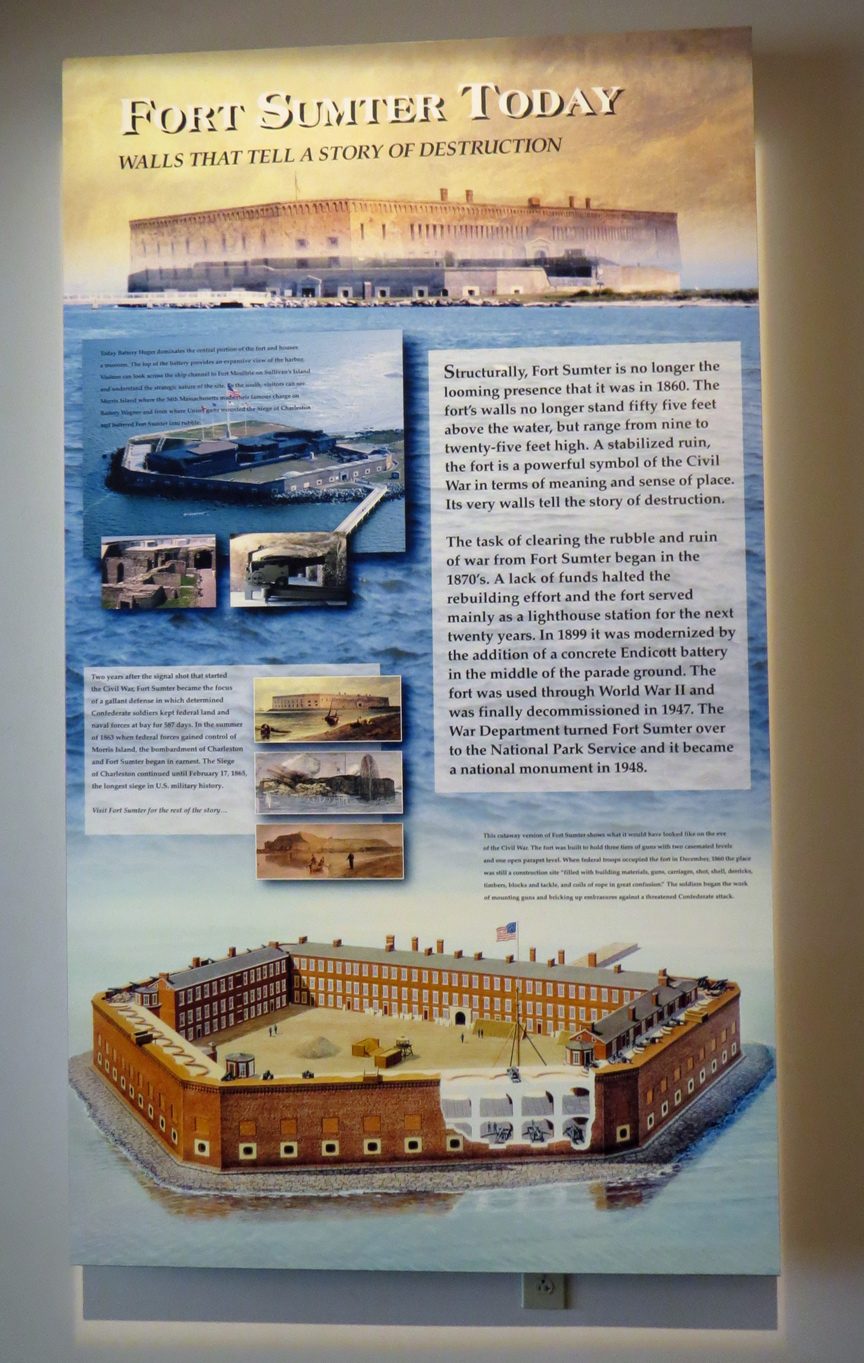
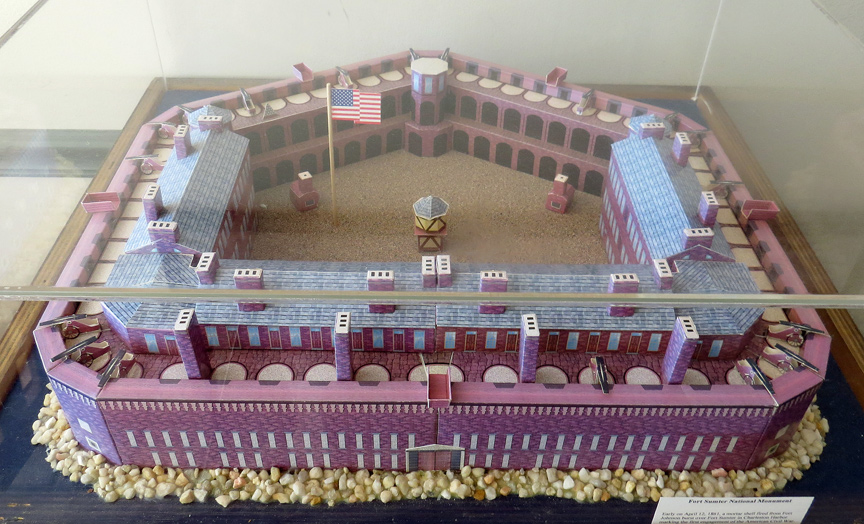
model of Fort Sumter
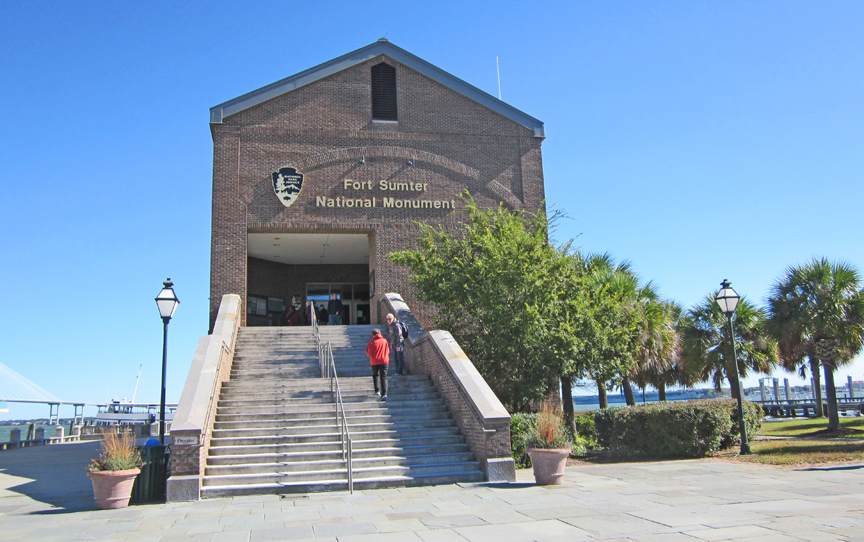
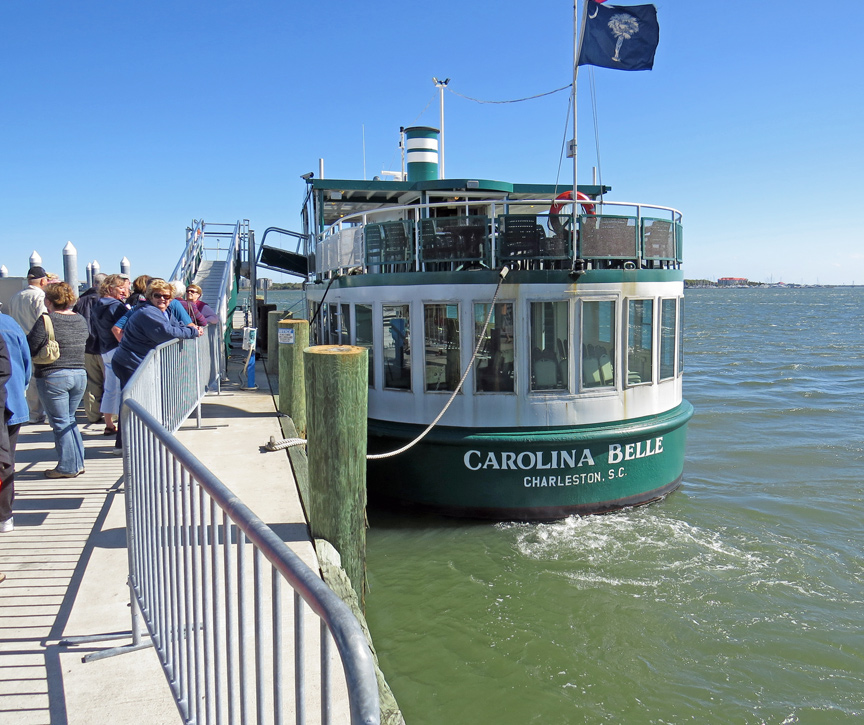
boat for the harbor tour
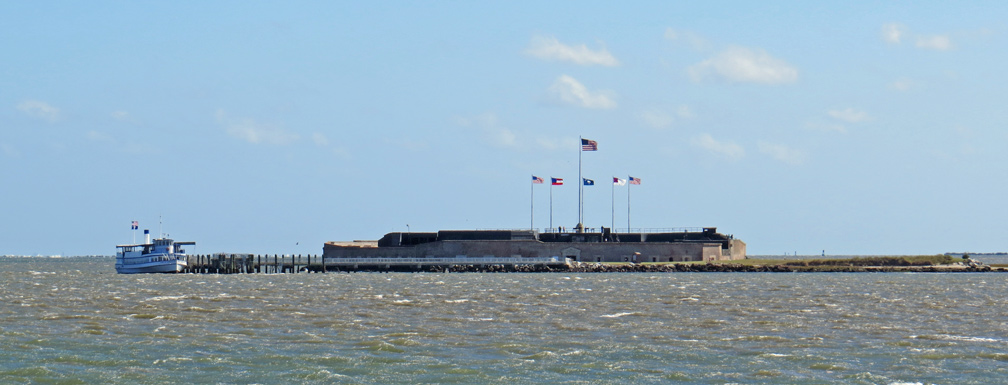
approaching Fort Sumter
